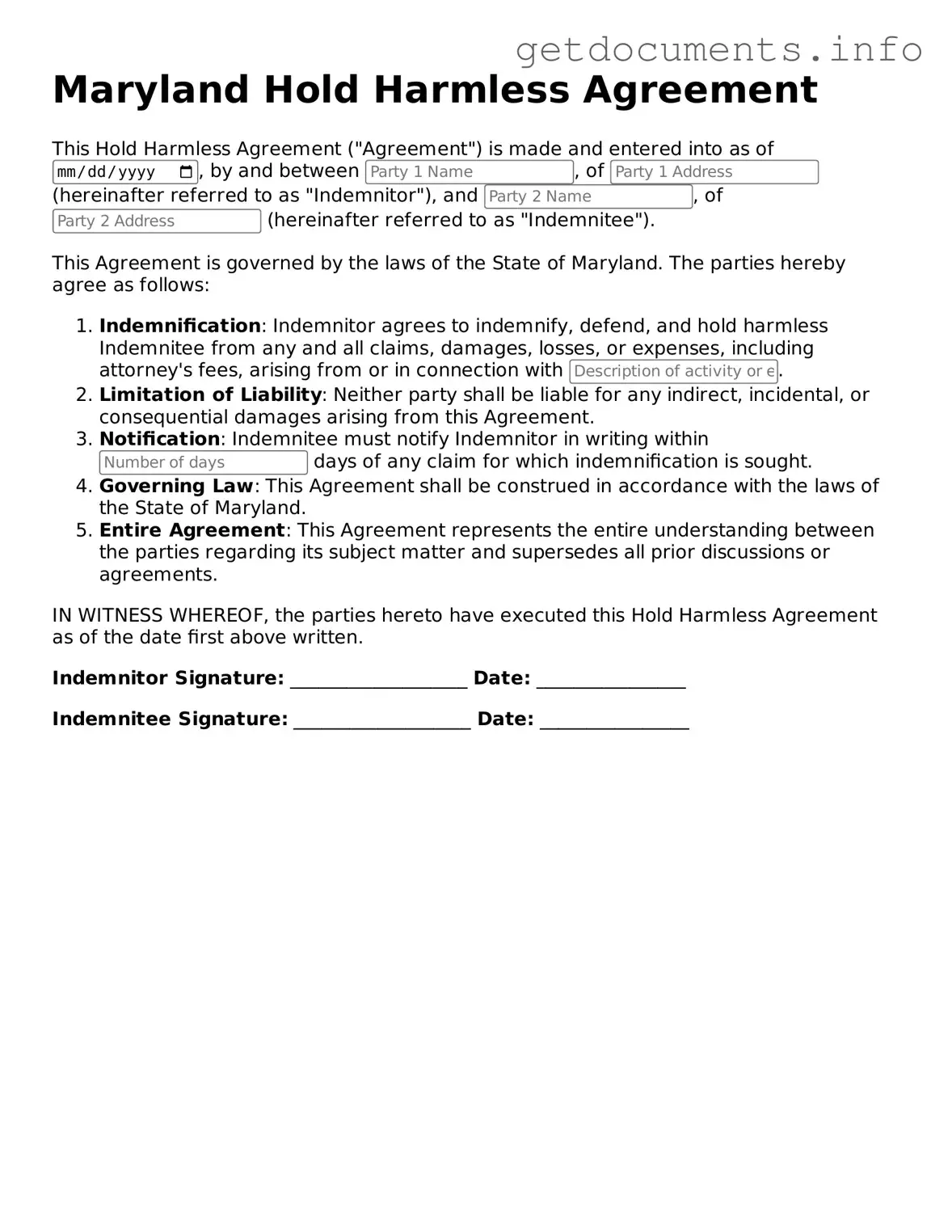Free Hold Harmless Agreement Template for Maryland
The Maryland Hold Harmless Agreement form is a legal document that protects one party from liability for damages or injuries incurred by another party during a specified activity or event. This agreement is commonly used in various contexts, including rental agreements, events, and construction projects, to ensure that one party does not hold the other responsible for certain risks. Understanding this form is essential for individuals and organizations looking to safeguard their interests.
To fill out the Maryland Hold Harmless Agreement form, click the button below.
Access Hold Harmless Agreement Editor
